The vast size of Amazon’s market share in ecommerce is common knowledge, but not many people know that many of the sellers on the marketplace are individual entrepreneurs.
As of 2022, 60% of sales on Amazon in the US were generated by independent sellers, and this number is still holding strong in 2024. A large chunk of these Amazon sellers are resellers, and this article will teach you what it takes to join them.
One of the only differences between those who spend money every month on Amazon and those who make money every month using the platform is the choice to become a seller.
Becoming a seller on Amazon may seem out of reach or intimidating at first, but once you get over the initial concerns and potential barriers to entry, you can build a thriving business on the platform as a reseller of products.
With this guide, we will start with a few concerns you might have before diving into how you can make money reselling on Amazon, complete with different business models explained, a thorough explanation of what FBA is, and a step-by-step process of how to launch and sustain your business.
Let's get started!
Want to jump ahead? Click through to skip to:
- Is Reselling on Amazon Legal?
- What to Know Before Selling on Amazon
- How to Make Money Reselling on Amazon
- How to Launch an Amazon Reselling Business: Step by Step Guide
- How to Use Amazon FBA
- Top tips for Amazon Reselling Success
- Discover Top Reselling Resources with Whop!
- FAQs
Is Reselling on Amazon Legal?
One of the first concerns that you might have when it comes to being a reseller on Amazon is if you are even allowed to do it in the first place.
This question can be answered more broadly if you do research on whether or not reselling itself is illegal, and the answer is that if you are the rightful owner of a legally purchased, genuine product that presents no potential for harm, you are allowed to resell it, which means that you can do so on Amazon.
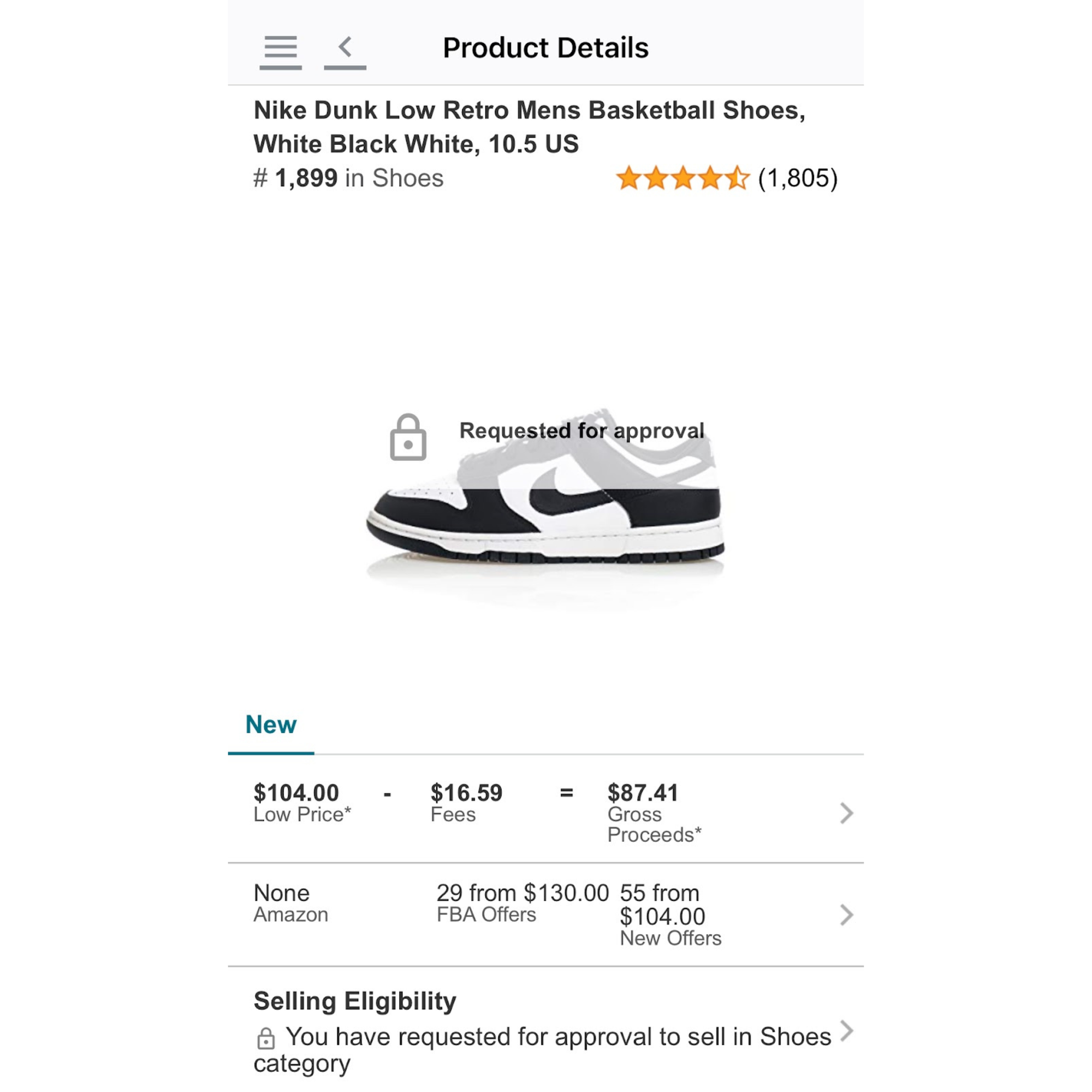
However, when it comes to selling on Amazon in particular, although you may be legally allowed to sell products, you may have to meet certain requirements with specific brands or product categories.
We will talk more about this topic later.
What to Know Before Selling on Amazon
In order to be well prepared to sell on Amazon, you’ll need to know the following things:
- There might be certain seller requirements
This is because Amazon holds a high standard for sellers as they want to keep a good relationship with the brands that they are reselling. Requirements vary by product and brand, and you will have to follow specific guidelines as directed to have permission (i.e become ungated) to sell a certain product. - You may need a large budget
When it comes to sourcing inventory for reselling, it is often better to source your product in bulk as most suppliers offer a discount for larger orders. Buying in bulk can mean meeting a minimum order quantity, which sometimes calls for a large budget, especially if you want to acquire your inventory at a profitable price. - It is important to understand the competitive landscape
As a reseller on Amazon, if you have a brand-name product that is in demand, other sellers will be selling the exact same product. This makes for an environment that can be extremely competitive, meaning that an item that was once profitable and fast selling could lose its viability if the market price goes below your cost basis. - Calculate all fees when predicting profits
Fees on Amazon can be complicated, and one of the biggest mistakes that new sellers make is not calculating any and all fees when selling a product. An item might appear profitable at first, but if you take all of the fees into account, you might realize you will actually lose money if you sell it. Fees to look out for include listing fees, shipping fees, and the advertisements that might be necessary to attract buyers. Additionally, if you’re using FBA, you’ll have to take time to understand the whole fee structure–more on this later. - It’s all about testing with persistence to find a winning product
If finding a winning product was easy, everyone would be flocking to Amazon and making money as a seller there. However, the truth is that it will take research and persistence to find a winning product or products that will sustain a long-term profitable business, and you will encounter losers along the way. You will always have to be testing and researching so that you can stay profitable and ahead of the competition. - There are different business models
Selling on Amazon can take on numerous forms, each of which has different fulfillment and sourcing styles. Each business model has its own pros and cons. We will discuss these business models more in depth later on in this guide.
How to Make Money Reselling on Amazon

While it’s relatively easy and quick to pick a product and to list a product on Amazon, making money as a reseller on Amazon requires a well-thought-out strategy.
The basic rule of the game is to sell your product for higher than you buy it, but you have to thoroughly calculate any fees, which might run quite high if you’re using FBA.
Additionally, you will have to find profitable products to sell. As a reseller, it is best not to have a single winning product, but to diversify in case a single product loses profitability. Picking a niche that you are familiar with and finding an assortment of products within it to sell in your store is a good strategy, and this takes constant research.
All of this said, you will have to approach Amazon reselling with the correct mindset, which includes understanding consumer demand and the competitive landscape of your product and being able to continuously research and gauge profits.
In addition to understanding what it takes to sell on Amazon and how to make money as a reseller, you’ll need to understand the specific action points that you’ll need to follow.
Here is a brief list of what you’ll need to do to become an Amazon reseller:
- Choose your business model
- Pick your product
- Register on Amazon
- Find suppliers
- List your products
- Fulfill your product
Now, let's dig deep into each of these steps.
How to Launch an Amazon Reselling Business: Step-by-Step Guide
Here are the steps that you can take to get your Amazon reselling business going:
Step 1 : Check and meet any requirements for your product and its category
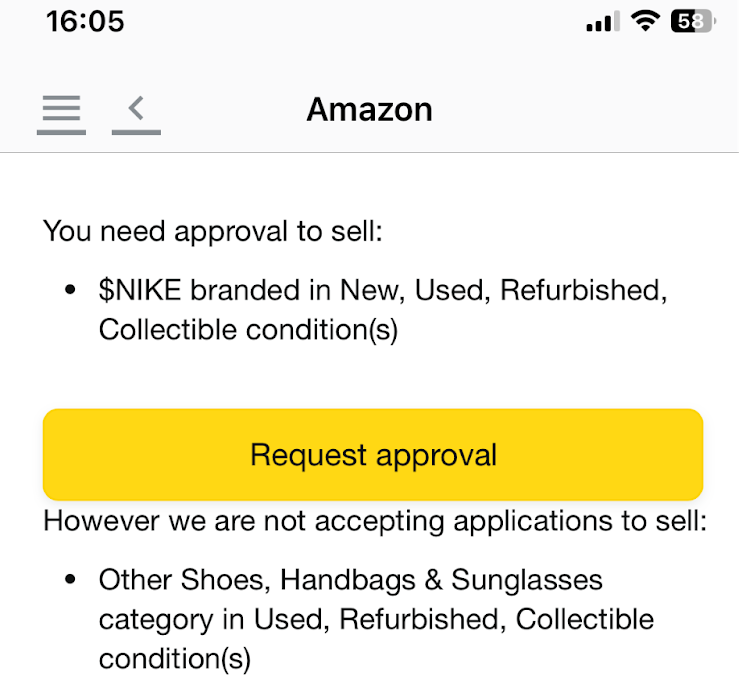
During the planning of your business, you will have chosen which product category you will be selling in. It is necessary to check any requirements, either in the broad product category or the individual product.
It may take time to gain eligibility to sell a product, and you may need to switch your product category or specific product if you can’t meet the requirements.
Step 2 : Settle on a product to sell on Amazon
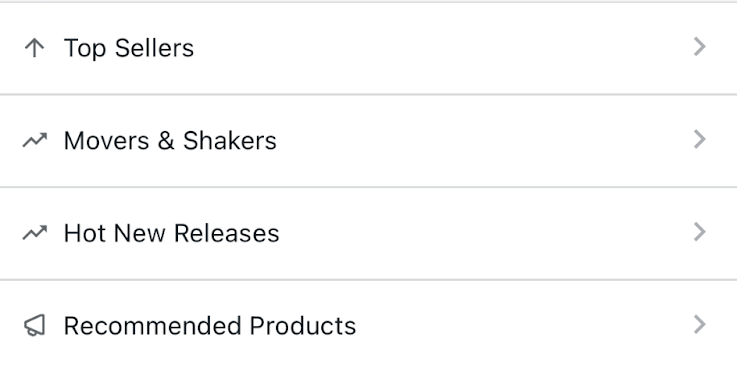
While researching your individual eligibility to sell in a product category, you may have had to pivot away from the original product that you were intending to sell. Settle on a product that you can sell based on both eligibility and profitability.
Step 3 : Find suppliers for your products
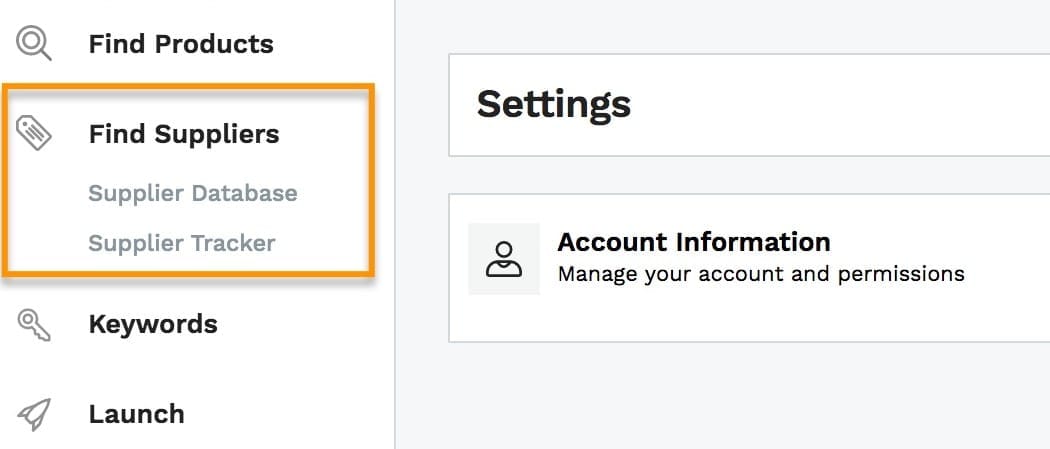
Now that you have settled on your product, you need to find suppliers for your product that are both consistent and profitable. This might mean developing a relationship with an individual supplier or wholesaler, so you have to take the time to seek out and build those connections so that you can build and maintain a profitable business.
Most private reselling communities will help with this step, and this might be one of the biggest perks of being inside of one. Additionally, some software tools such as Jungle Scout pictured above can help to find suppliers.
Step 4 : Pick your fulfillment model
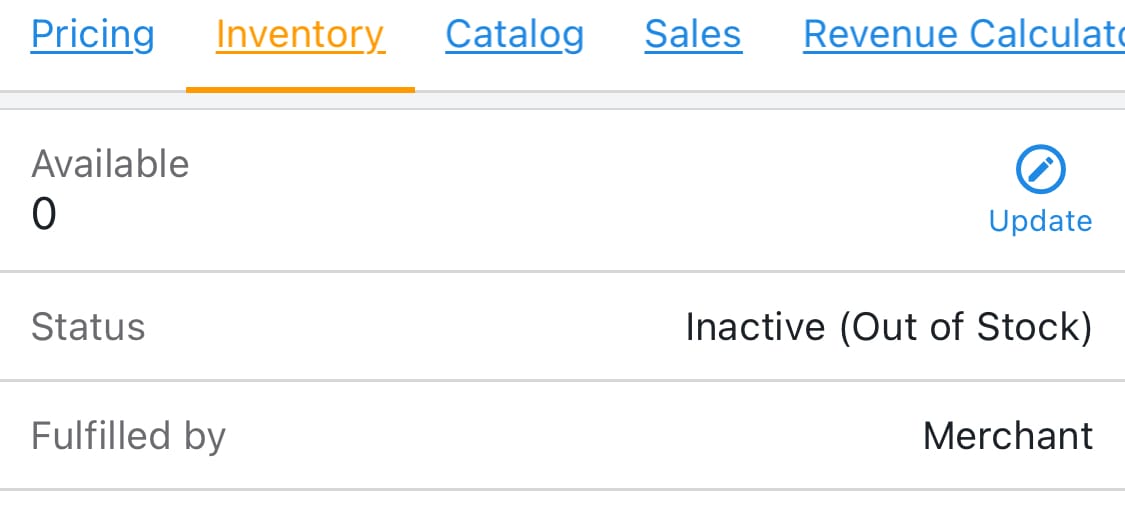
As an Amazon reseller, you will need to choose your fulfillment model, which will either be self-fulfilled (FBM) or fulfilled by Amazon (FBA). If you don’t have much inventory or are just selling an individual product, FBM is probably your best bet, especially when starting out.
As you scale, or if you already have a large assortment of inventory or inventory that sells faster on Amazon Prime, you will want to use FBA. Be sure to calculate your profitability with all fees in mind if you do choose to sell via Amazon FBA.
Different Amazon Fulfillment models
If you’re selling on Amazon, there are two different ways that your product will be fulfilled: Fulfillment by Merchant (FBM) and Fulfillment by Amazon (FBA)
FBM
When you fulfill a product yourself, you will be classified as a FBM seller. This means that you will have to do all of the packaging and shipping. At a smaller level, this means that you will likely be physically doing this fulfillment yourself. As you scale, you can start to fulfill using a third-party company like a 3PL, or you can choose to go the Amazon FBA route.
FBA
Fulfillment by Amazon, commonly known as FBA, is Amazon’s own alternative to a seller using a 3PL for fulfilling their orders. While somewhat costly, FBA offers a number of advantages, which includes easy-to-follow and simple instructions for sending in product in bulk to be sold. Shipping in product with FBA is highly discounted thanks to Amazon’s strong logistics. Additionally, as an FBA seller, you will gain the ability to sell your inventory to Amazon Prime buyers, who often have a higher conversion rate which will result in higher sales volume.
Step 5 : Create and configure your Amazon product listing
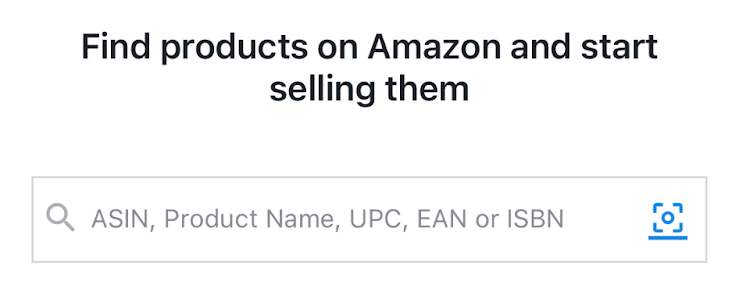
Creating a listing on Amazon is quick and easy once you have met the requirements, but you may have to take time to properly configure your listing. This starts with choosing whether or not your product is fulfilled by you or by Amazon, but the main thing you will need to be on top of is the pricing of your product, which is dynamic.
Each seller has their own pricing based on their margin requirements for profitability, and it’s often the lowest number that makes it to the buy box. The buy box is used to refer to the featured offer which is the default product from an individual seller that is sold to a customer.
Step 6 : Launch your store on Amazon
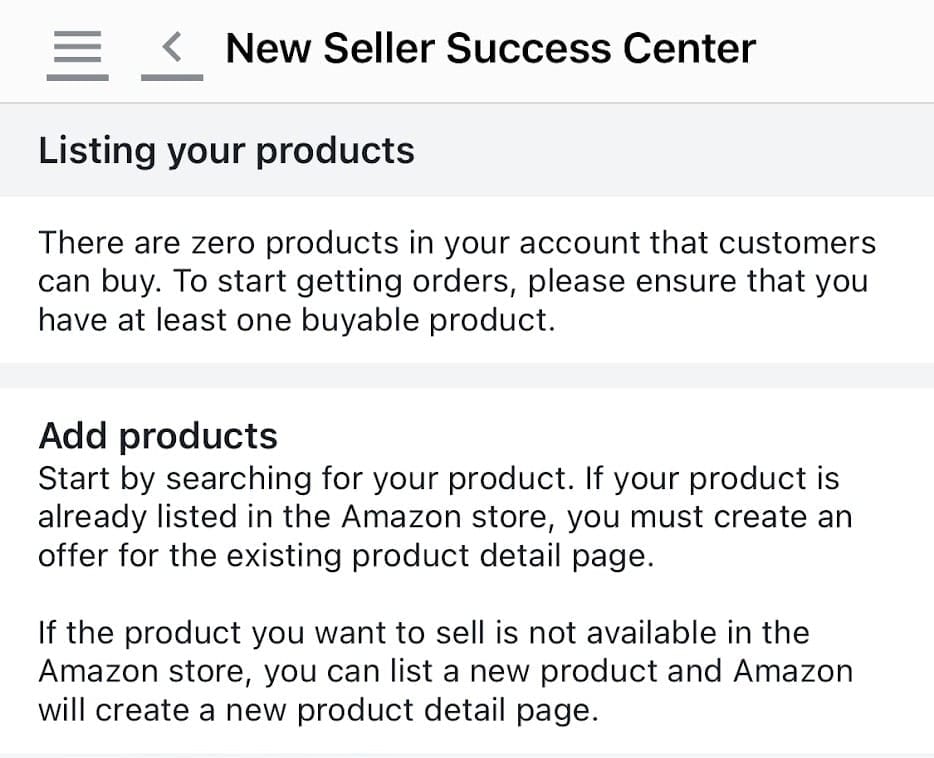
Now that you have picked your product, set up your store, and your listing has been created and configured, you’re ready for your store to go live!
At this point, it is just a game of patience and maintenance as you figure out whether or not you have made yourself a viable business or not. It will take time to see if you can maintain profitability, and you may need to make changes along the way.
How to Use Amazon FBA
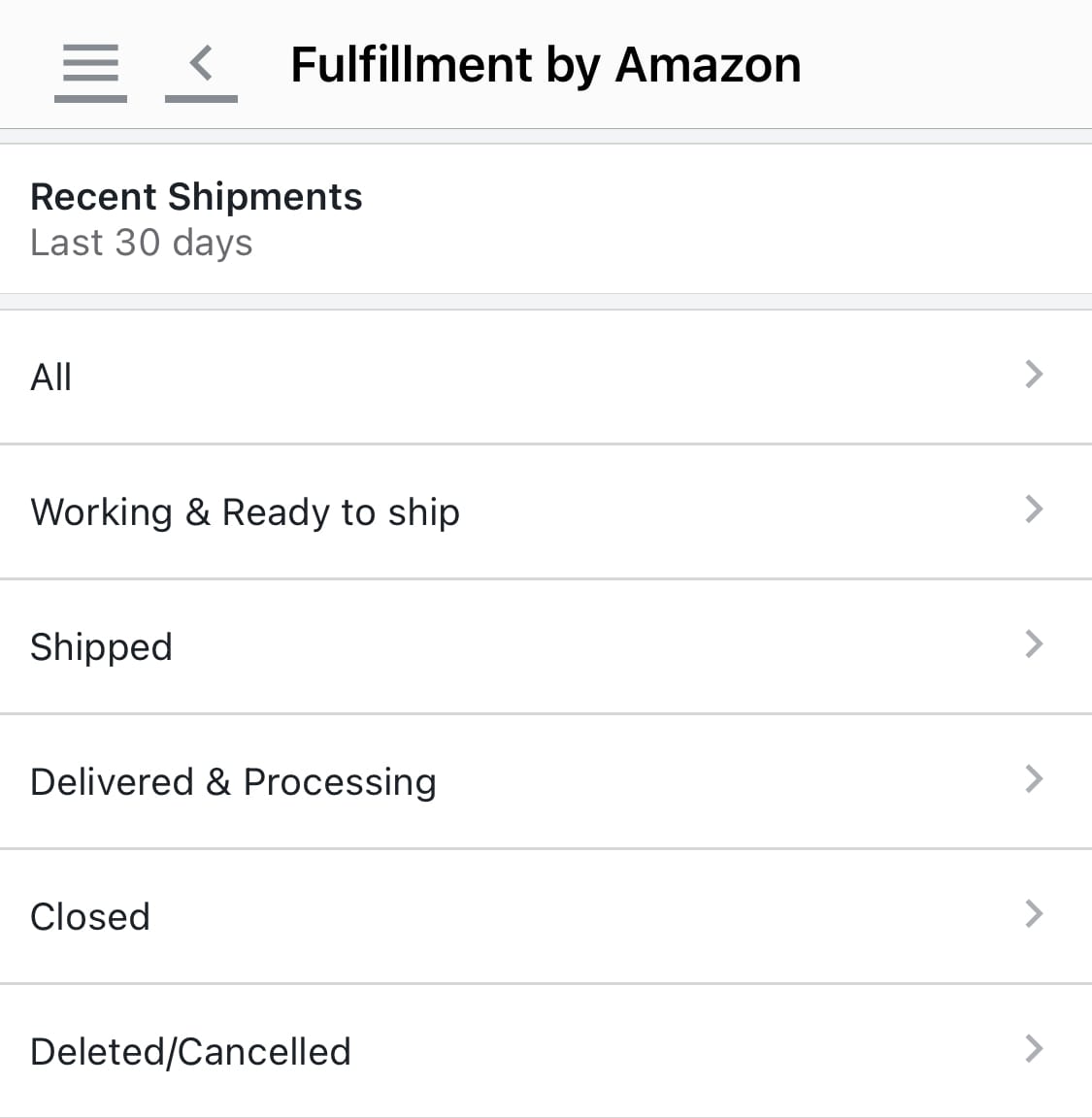
If you want to take advantage of Amazon’s FBA program, the process is fairly simple:
Sign up as a Professional seller
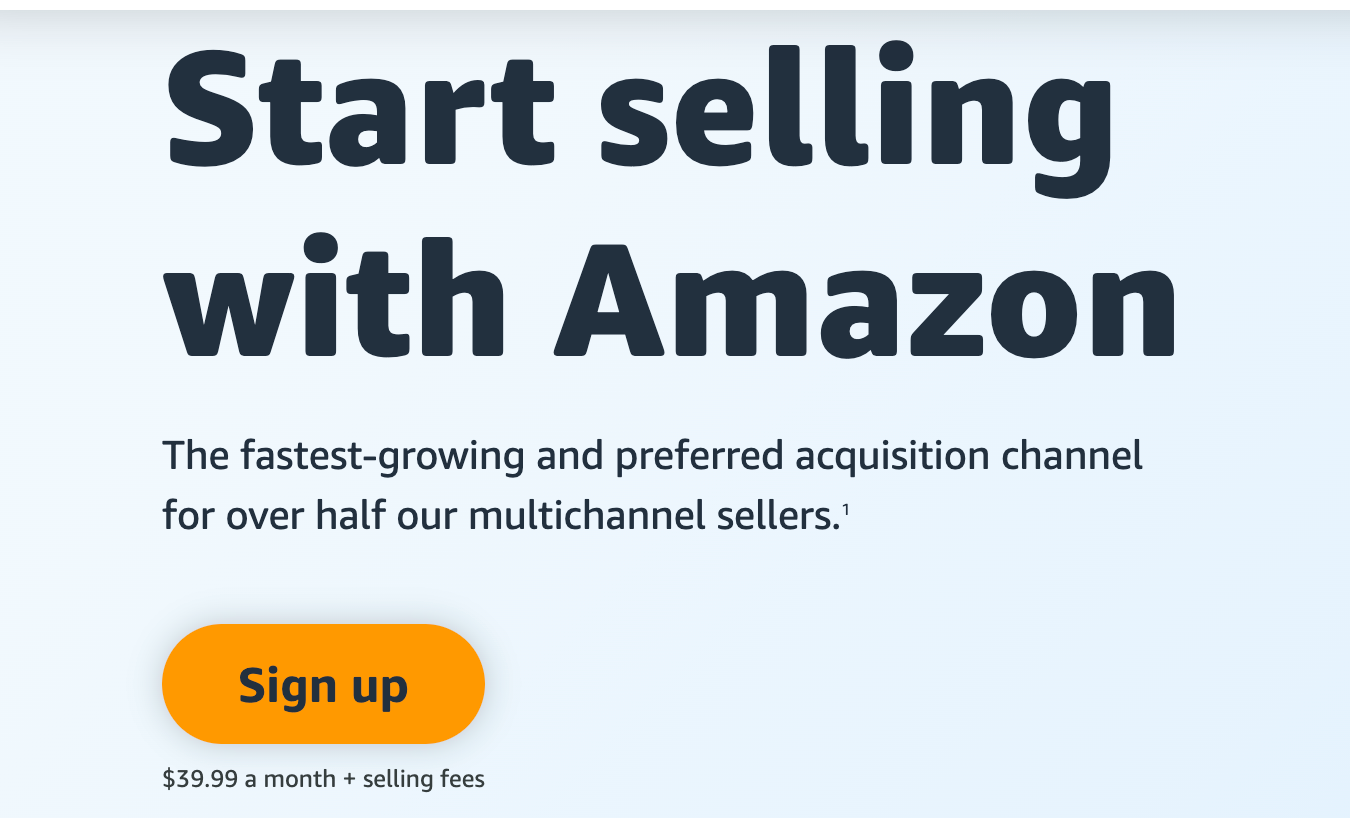
The first thing you’ll need to do is to sign up as an Amazon FBA seller is to sign up as a Professional seller, which will cost you $39.99 per month. Ordinary sellers are not eligible for the FBA program.
Create your product listings
Once you have signed up and have products that you are ready to sell, you will need to follow the steps to create your product listings. During this process, you’ll be able to see whether or not you are eligible to sell a certain product, and if you can’t currently sell the product, you can see what it takes to gain eligibility so you can start selling.
Choose to fulfill your product with Amazon
Now that you have your product listings, you will need to specify that you will use FBA as your fulfillment method. You’ll then get instructions to send in your products, complete with shipping labels.
Send in your product as instructed
Once you have received your instructions on how to send in your product, make sure to follow them exactly. For example, if you have a large assortment of inventory, your shipment will be split up into different boxes, and you’ll be told which product goes in each box and which associated label to use per box. Be sure to follow as instructed, and stay compliant with any Amazon shipping requirements and guidelines.
Manage your inventory
When your product has reached Amazon’s warehouses, you'll be able to see and manage your inventory inside your seller dashboard. You can see how quickly the product is selling and how many returns are being processed and make decisions regarding inventory management based on those statistics. If for any reason you want to pull inventory out of FBA, it is possible, but you will have to pay an additional fee.
Top Tips for Amazon Reselling Success
We have gone through the whole process of how to sell on Amazon and how to use Amazon FBA. Now, let's take a look at some key things to keep in mind if you want to have success as a reseller on Amazon:
Choose products that have quick and low-cost fulfillment
Products have different associated fulfillment costs, and this is mainly related to the size and weight of it. The best product to sell in terms of low-cost fulfillment is something that is small and light yet expensive. Watches and phones are good examples of items that fall into this category.
Perform a competitive analysis
When choosing your category and specific product, you will want to see how competitive the market is. Remember that with reselling, multiple sellers are selling the same item, so in order for customers to buy your product, you’ll need to show up as a preferred option by achieving the buy box. While viewing a particular listing, you’ll be able to see if there are many other sellers by seeing the different options for buying.
You’ll also want to check the product rankings to see how in demand the product is–even if there are many sellers, the other sellers could potentially run out of inventory, and you can move yours while they have fulfillment gaps.
Conduct thorough pricing research
You will need to do extensive pricing research and analysis on both the buying and selling side to make sure you have the potential for a viable reselling business. Include all fees in addition to the cost to acquire to decide the price that you need to sell your product at, and make sure it is within range or ideally below the current competition.
When possible, check for any potential pricing changes, which you can do by either observing the product over time or using research tools.
Use tools and groups to fuel your success
Performing manual research is incredibly time-intensive, and sometimes requires knowledge that isn’t obvious or readily available. Thankfully, many individuals and companies have addressed this issue by creating resources that assist Amazon sellers in both finding profitable opportunities and optimizing business.
Tools such as Jungle Scout and Helium 10 allow you to see statistics like sales volume and pricing history of different products and their individual sellers, which help you to identify data-backed market opportunities more quickly. You can either subscribe to these tools directly or you can join a group that grants access to these tools in addition to live assistance and other resources.
Consider moving off of Amazon
If you find success as an Amazon reseller, it might be a good idea to open a separate storefront where you can funnel direct traffic so that you won’t have to deal with the inevitable competition of other sellers when selling on Amazon. In the beginning, you may not have the budget to do this, but if you have the profits to invest into marketing, whether organic or paid, you can fund an effort to create a direct sales channel. This will save you platform fees and will allow you to have a direct relationship with your audience.
Discover Top Reselling Resources with Whop!
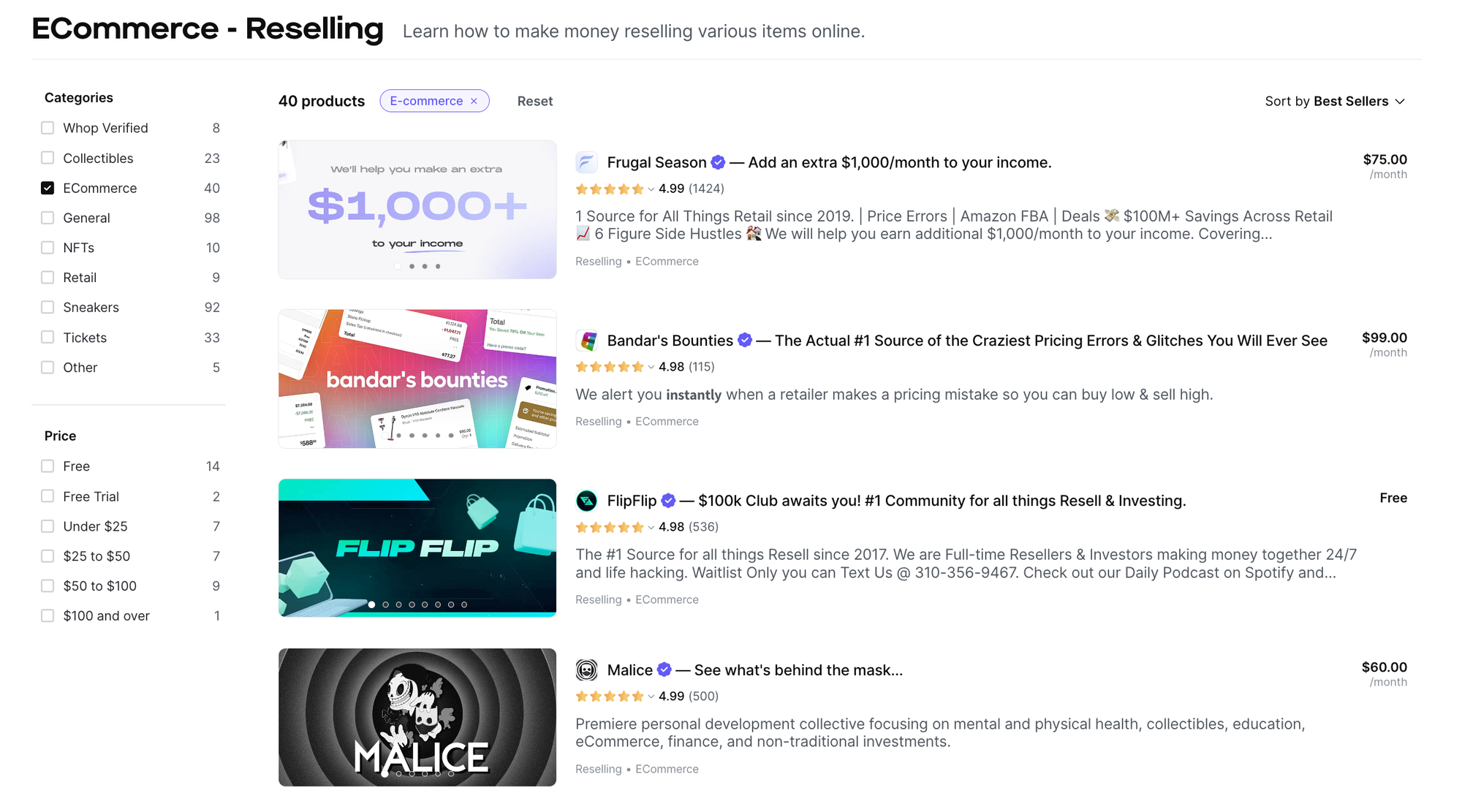
It is clear to see that reselling on Amazon is about more than simply sourcing products and listing them for sale. There is so much to consider, and to truly have success you need to understand all aspects of the process.
Undertaking the research yourself can be a time-consuming and overwhelming - so why not have someone else do the research for you? Whop is an excellent resource for groups that have information about all things reselling. In addition to insights about reselling on Amazon, there is a large selection of groups dedicated to all online money-making opportunities so you can cash in with a team led by seasoned experts. Many of the group’s leaders have generated multiple seven figures in revenue, and they are happy to help draw out a roadmap for total beginners to follow in their footsteps. In addition to knowledge and help, most groups are complete with software and tools that will help you build and scale your business to its highest potential.
Join a reselling group on Whop and learn all you need to know to become a successful reseller on Amazon! Browse reselling Discord groups and communities here.
FAQs
What are the most profitable products to resell on Amazon?
The most profitable products to resell on Amazon vary based on your expertise and connections in a certain realm. Ideally, you will have an individual advantage that will be hard to replicate by outsiders so that you have the highest profitability. Generally speaking, the best product for reselling has high margins and is small and light so that it is cheap and quick to fulfill.
How do I know if I picked the right product and business model on Amazon?
Picking the right product and business model on Amazon takes time and testing. You can initially know you are on the right track by conducting thorough research and consciously selecting your product based on opportunity and profitability. However, you won’t know whether or not you have the right product or business model without testing it live. Once your product is selling consistently and remains profitable for an extended period of time, you will know that you have a good product and business model that has potential for scale. It may take a few months of testing or even relaunching entirely to establish a profitable business.
What do you need to become an Amazon seller?
Becoming an Amazon seller is quite simple. You can start simply by having product and listing it on the platform. However, in order to create a long-term, sustainable business, you will want to register a business and ideally secure any resale permits that might be necessary in addition to getting approved to sell the product that is in your desired category.
What might prevent me from selling on Amazon?
The biggest barrier to selling on Amazon is your eligibility to sell a certain product. Even though anyone can sign up for an account, many products have unique requirements, preventing new sellers from listing them. When creating a product listing, you will be able to see if you qualify to sell a certain product.
What is Amazon gating and ungating?
The process of being prevented from or granted access to selling a product is referred to gating and ungating. Especially as a new seller, you will be gated from selling many products. Amazon sometimes makes it completely transparent as to what you need to become eligible, while other times, it might not be so clear. Things you can do to get ungated include submitting a whoelsale invoice or holding a high seller rating after making a certain amount of sales. Many reselling groups that focus on Amazon have assistance and guides on getting ungated so you can sell products.
What’s the difference between Amazon FBA and FBM?
The difference between Amazon FBA and FBM has to do with fulfillment. If you fulfill your own product, you are an FBM seller. If you use Amazon for your product fulfillment, you will be an FBA seller. You can be an FBA seller simply by choosing it as an option if you have Amazon’s Professional Seller subscription, which costs $39.99 per month.
Do Amazon resellers make good profits?
As an Amazon reseller, your income will be proportional to the time and work you put in, combined with the size of the market opportunity you are capturing and the profitability and sales volume of your product. While some Amazon resellers make a side hustle, others build seven-figure businesses. Jungle Scout, an Amazon analytics tool, estimates that the median of Amazon sellers makes an annual profit of $12,000 to $300,000.
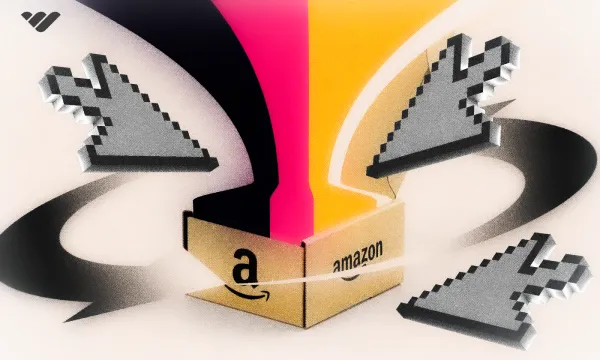


![Top 18 best ticket reselling Discord servers [November 2024]](/blog/content/images/size/w600/2023/12/Top-Ticket-Reselling-Discord-Servers--1-.webp)
![Top 22 best sneaker reselling Discord servers [2024]](/blog/content/images/size/w600/2024/01/sneaker-reselling-discord.webp)
![Top 26 best reselling Discord servers [November 2024]](/blog/content/images/size/w600/2023/09/reselling-discords.webp)